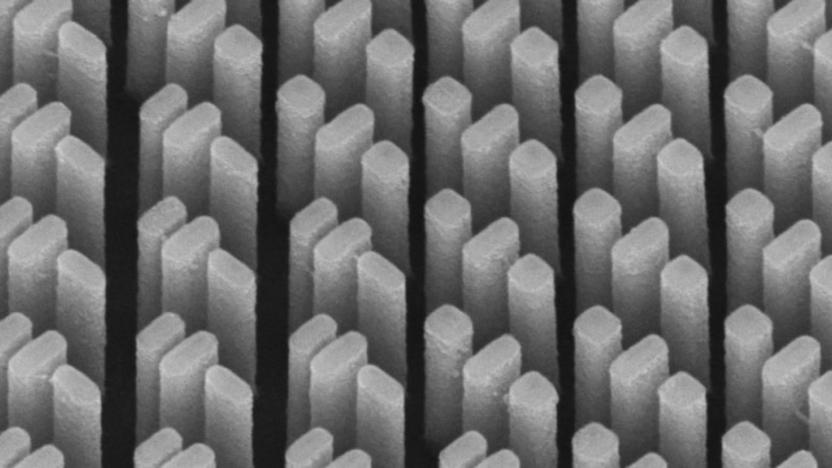refraction
Latest

Researchers find a way to fix the purple halo effect in images
While cameras and cutting-edge microscopes have come on leaps and bounds in recent years, the optical technology these kind of products use hasn't really changed since the mid-1700s. Even the highest spec gear relies on compound lenses, which were invented around 1730. Their main function is to bring together different wavelengths of light that otherwise focus in different spots. This corrects what's called "chromatic aberrations," or in other words, the purple halo that appears in images when the wavelengths are focused at different points. The problem is, these lenses are bulky, expensive and not as effective as they could be. But researchers at Harvard have found a solution with its newly-developed "metacorrector".

Glass globe doorknob gives you a view of what lies beyond... the door
Got more curiosity than energy to open doors? Then you'll want to get yourself one of these fisheyed globe doorknobs from designer Hideyuki Nakayama. The idea is resoundingly simple, the globe on your end of the door provides a wide-angle view of what's on the other side, which is achieved by collecting and reflecting light soaked up by another globe on the other end. So yes, privacy might be a tiny bit compromised with these door handles, but the fun coefficient should be through the roof.

Invisibility cloak upgraded to bend infrared light, not to mention our minds
The fabled cloak of invisibility was once considered impossible for modern science, chilling out with perpetual motion up in the clouds, but these days scientists are tilting at blurry windmills with a modicum of success several times a year. The latest advance in theory comes to us from Michigan Tech, which says it can now cloak objects in the infrared spectrum. Previous attempts using metallic metamaterials could only bend microwave radiation, the study claims, but using tiny resonators made of chalcogenide glass arranged in spokes around the object (see diagram at left) researcher Elena Semouchkina and colleagues successfully hid a simulated metal cylinder from 3.5 terahertz waves. While it's hard to say when we might see similar solutions for visible light, even a practical application of infrared cloaking could put your night vision goggles to shame, or perhaps block covert objects from being detected by those newfangled terahertz x-rays.

3D invisibility cloak fashioned out of metamaterials
Those HDTV manufacturers did tell us that 3D was going to be everywhere this year, didn't they? Keeping up with the times, scientists investigating potential methods for rendering physical objects invisible to the human eye have now moved to the full three-dimensional realm. The Karlsruhe Institute of Technology has developed a photonic metamaterial that can make things disappear when viewed from all angles, advancing from previous light refraction methods that only worked in 2D. It sounds similar to what Berkeley researchers developed not too long ago, and just like Berkeley's findings, this is a method that's still at a very early stage of development and can only cover one micrometer-tall bumps. Theoretically unlimited, the so-called carpet cloak could eventually be expanded to "hide a house," but then who's to say we'll even be living in houses by that time?
